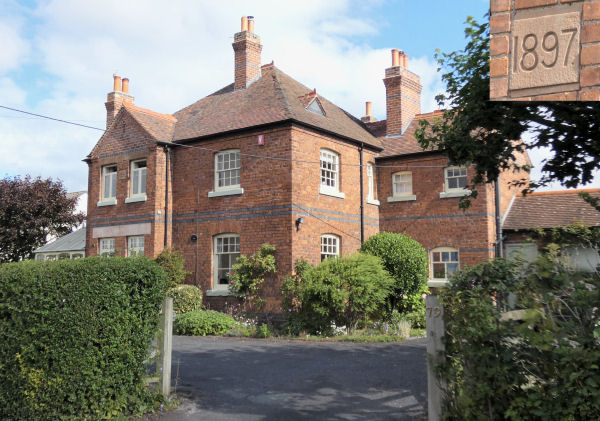Home for Orphan and Workhouse Girls / Edgmond Girls Home, Newport, Shropshire
The Newport Home for Orphan and Workhouse Girls was founded in about 1893 through the initiative of Miss Mary Selina Roddam. On 15 September, its premises at Chetwynd End, Newport, were licensed for use as a Certified School, enabling it to receive girls boarded out by the workhouse authorities. The girls were then trained for service. Miss Roddam was an active member of the Girls' Friendly Society, under whose auspices the home was run. By 1895, Miss Roddam had also become a member of the Newport Union's board of guardians.
On 10 February 1898, the home re-opened in new, purpose-built premises on the road from Newport to Edgmond, the cost of its construction being borne by Miss Roddam. The home was now formally known as the Edgmond Certified Home for Girls, though often shortened to the Edgmond Girls' Home. The new building could accommodate up to twenty girls, aged from 6 to 12 years at their date of admission. On the ground floor were an entrance ball (containing a stone staircase to the upper rooms), day room, matron's room, kitchen, back kitchen, pantries, lavatory etc; an additional staircase for use in emergencies; a detached washhouse, and various other outdoor offices. On the first floor were three dormitories, capable of holding 20 beds, matron's bedroom, isolation ward, lavatory; and on the next floor one large room. The water supply came from a deep well in the sandstone. The house was surrounded by gardens, all newly laid out.

Former Edgmond Girls' Home. © Peter Higginbotham
The home closed in the 1920s and the property is now a private residence.
Records
Note: many repositories impose a closure period of up to 100 years for records identifying individuals. Before travelling a long distance, always check that the records you want to consult will be available.
- Records of the Girls' Friendly Society are deposited at The Women's Library, London School of Economics, 10 Portugal Street, London, WC2A 2HD.
- Certified Schools were run by a wide range of groups and individuals and have no central records. However, relevant information may survive in the records of the Poor Law Union that placed each child at a particular establishment. The best place to start is the union covering the area where the child previously resided, although children were sometimes sent further afield.
Bibliography
- Heath-Stubbs, Mary Frienship's Highway: Being the History of the Girls' Friendly Society 1875-1935 (1935, GFS)
- Higginbotham, Peter Children's Homes: A History of Institutional Care for Britain's Young (2017, Pen & Sword)
- Certified Schools page on this website.
Links
Except where indicated, this page () © Peter Higginbotham. Contents may not be reproduced without permission.


